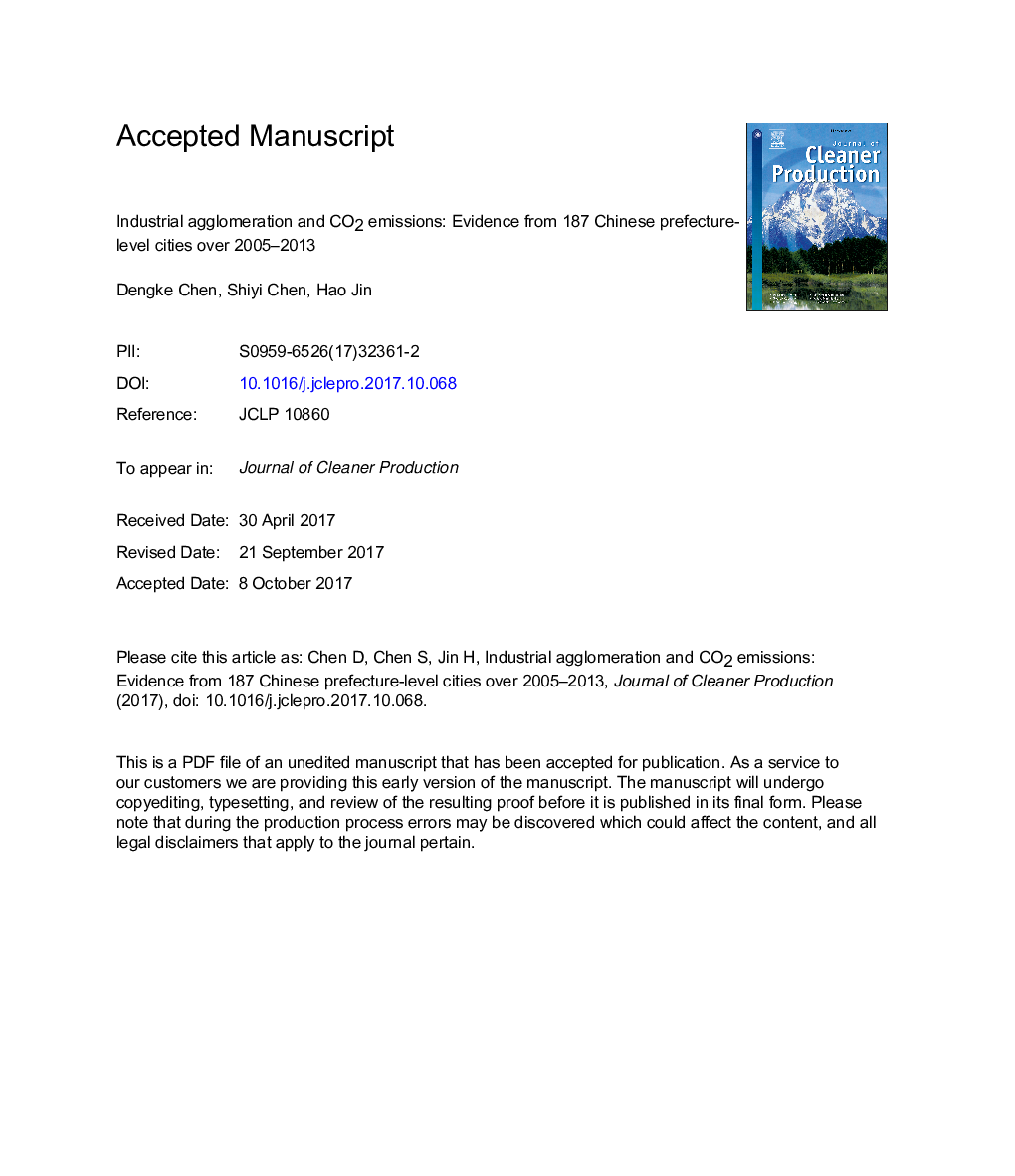| Article ID | Journal | Published Year | Pages | File Type |
|---|---|---|---|---|
| 8100126 | Journal of Cleaner Production | 2018 | 38 Pages |
Abstract
The agglomeration of the industrial enterprises in China has been increasingly enhanced over the recent 40 years. Does the industrial agglomeration induce more emissions of CO2, or is it of great benefit to the reduce of CO2 emissions? Using ten different kinds of fossil energies mainly used in industrial sectors, this study estimates China's industrial CO2 emissions and industrial CO2 emission intensity in 187 prefecture-level cities during the period 2005-2013. Based on the estimated results, the effects of industrial agglomeration on CO2 emissions and CO2 emission intensity are further explored. To address the endogeneity problem of the industrial agglomeration, we propose an instrument variable strategy based on the dummy variable of whether the city was a trading port during the period 1842-1909. The estimation results suggest while the agglomeration of the industrial enterprises results in more CO2 emissions, it reduces the intensity of the industrial CO2 emissions, which is in turn conducive to the government's goal of reducing the CO2 emission intensity in 2020.
Related Topics
Physical Sciences and Engineering
Energy
Renewable Energy, Sustainability and the Environment
Authors
Dengke Chen, Shiyi Chen, Hao Jin,
